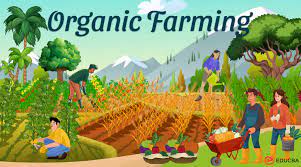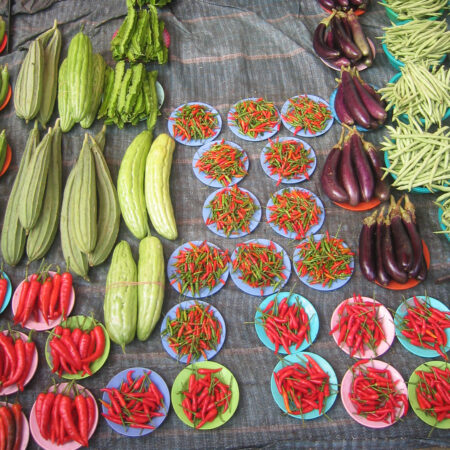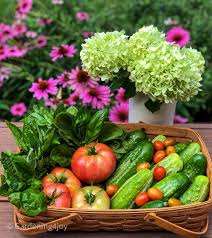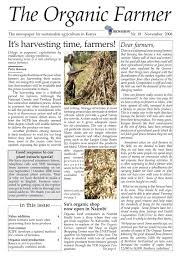
Organic farming soil fertility is a fundamental aspect of sustainable agriculture, focusing on maintaining and enhancing the natural health and productivity of the soil. Unlike conventional farming, which often relies on synthetic fertilizers and pesticides, organic farming emphasizes a holistic approach that nurtures the soil’s ecosystem. The goal is to create a vibrant, living soil that supports healthy plant growth, improves crop yields, and contributes to environmental sustainability.

The cornerstone of organic farming soil fertility lies in understanding the soil as a dynamic, living system. Healthy soil is teeming with microorganisms, earthworms, and other organisms that play a crucial role in nutrient cycling and soil structure. Organic farming practices aim to enhance these natural processes rather than disrupt them. One of the primary methods used to boost soil fertility is composting. Organic compost, made from decomposed plant and animal matter, enriches the soil with essential nutrients and organic matter. It improves soil structure, increases moisture retention, and promotes the growth of beneficial soil organisms. Regular application of compost helps maintain a balanced nutrient supply and reduces the need for synthetic fertilizers.
Another important practice in organic farming soil fertility is crop rotation. By alternating different types of crops in a specific sequence, farmers can prevent nutrient depletion and manage soil health more effectively. Different plants have varying nutrient requirements and root structures, so rotating crops helps prevent the buildup of pests and diseases, reduces soil erosion, and enhances nutrient availability. For example, legumes such as beans and peas fix nitrogen in the soil, enriching it for subsequent crops that require more nitrogen.
Cover cropping is another technique used to improve soil fertility in organic farming. Cover crops, such as clover, rye, or vetch, are planted during periods when the main crops are not growing. These plants protect the soil from erosion, suppress weeds, and add organic matter when they are incorporated back into the soil. Cover crops also help in nutrient cycling by capturing and storing nutrients that might otherwise be lost. When these plants decompose, they release nutrients slowly, providing a steady supply of food for the next crop.
Soil testing is an essential practice for managing organic farming soil fertility. Regular soil tests help farmers understand the nutrient content, pH levels, and overall health of their soil. With this information, farmers can make informed decisions about nutrient management and adjust their practices to meet the specific needs of their crops. Soil testing also helps identify any deficiencies or imbalances that can be addressed with organic amendments, such as bone meal, fish emulsion, or seaweed extract.
Maintaining soil fertility in organic farming also involves minimizing soil disturbance. Conventional tillage practices can disrupt soil structure and harm beneficial organisms. Organic farmers often use reduced tillage or no-till methods to preserve soil integrity and promote a healthy soil ecosystem. These methods help maintain soil moisture, reduce erosion, and enhance the natural processes of nutrient cycling.
Integrating organic matter into the soil is another key strategy for enhancing soil fertility. This can be achieved through practices such as green manuring, where specific plants are grown and then incorporated into the soil before they mature. Green manure plants, like buckwheat or mustard, add organic matter and nutrients to the soil, improving its structure and fertility. Additionally, using mulch—such as straw, leaves, or wood chips—helps retain soil moisture, suppress weeds, and gradually adds organic matter as it decomposes.
Organic farming also places a strong emphasis on biodiversity, which contributes to soil fertility. By cultivating a diverse range of crops and supporting natural predators, organic farmers create a more resilient ecosystem. This biodiversity helps manage pests and diseases naturally, reduces the need for chemical interventions, and enhances soil health through a variety of plant root systems and organic inputs.
In conclusion, organic farming soil fertility is achieved through a combination of practices that nurture the soil’s natural processes and promote long-term sustainability. Composting, crop rotation, cover cropping, soil testing, and minimizing soil disturbance are all integral components of a comprehensive approach to soil fertility in organic farming. By focusing on these methods, organic farmers create a healthy, productive soil environment that supports robust plant growth, reduces environmental impact, and contributes to a more sustainable agricultural system. The emphasis on natural, ecological methods reflects a commitment to preserving soil health and enhancing the resilience of farming systems for future generations.









